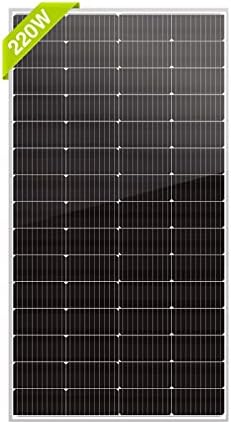Living off the grid for years has taught me the value of self-sustainability and renewable energy sources. When it comes to powering my off-grid home, solar panels have been an essential part of my setup. As technology continues to advance, the debate between mono PERC and polycrystalline solar panels has become a hot topic among those looking to invest in solar energy. Both options have their pros and cons, but which one provides better value for off-grid living? In this article, we will break down the differences between mono PERC and polycrystalline solar panels and determine which one is the best choice for off-grid living.
Mono PERC vs. Polycrystalline Solar Panels: What’s the Difference?
Before we dive into which type of solar panel provides better value, it’s important to understand the differences between mono PERC and polycrystalline solar panels.
Mono PERC, short for monocrystalline solar panels with Passivated Emitter and Rear Cell (PERC) technology, are an advanced type of monocrystalline panels that offer higher efficiency and better performance in hot weather compared to traditional monocrystalline panels. The PERC technology improves the efficiency of the panels by allowing for more light absorption and reducing energy losses.
On the other hand, polycrystalline solar panels are made from multiple silicon crystals, which results in a more affordable and cost-effective option compared to mono PERC panels. While they may not be as efficient as mono PERC panels, they still provide a reliable source of energy for off-grid living.
Which Provides Better Value for Off-Grid Living?
When it comes to choosing between mono PERC and polycrystalline solar panels for off-grid living, there are several factors to consider in determining which option provides better value.
Efficiency and Performance
One of the most important factors to consider when investing in solar panels for off-grid living is their efficiency and performance. Mono PERC panels are known for their higher efficiency, which means they can generate more power in the same amount of space compared to polycrystalline panels. This can be beneficial for off-grid living, especially in areas with limited roof space for solar panel installation.
On the other hand, polycrystalline panels may be less efficient than mono PERC panels, but they still provide a reliable source of energy for off-grid living. If space is not an issue, polycrystalline panels can still be a cost-effective option for off-grid homeowners.
Durability and Longevity
Another important factor to consider is the durability and longevity of the solar panels. Mono PERC panels are known for their durability and long lifespan, which can make them a valuable investment for off-grid living. With proper maintenance, mono PERC panels can last for 25-30 years or even longer, providing a steady source of energy for off-grid homeowners.
Polycrystalline panels are also durable, but they may not have the same long lifespan as mono PERC panels. However, with proper care and maintenance, they can still provide a reliable source of energy for off-grid living for many years.
Cost-Effectiveness
Cost-effectiveness is another crucial factor to consider when choosing between mono PERC and polycrystalline solar panels for off-grid living. Mono PERC panels tend to be more expensive upfront due to their higher efficiency and advanced technology. However, their long-term energy production and durability can make them a cost-effective investment for off-grid homeowners in the long run.
On the other hand, polycrystalline panels are more affordable upfront, making them a budget-friendly option for those looking to invest in solar energy for off-grid living. While they may not be as efficient as mono PERC panels, their lower initial cost can make them a practical choice for off-grid homeowners on a tight budget.
Pro Tips for Off-Grid Solar Panel Installation
Now that we’ve weighed the pros and cons of mono PERC and polycrystalline solar panels for off-grid living, here are some pro tips for installing and maintaining solar panels in an off-grid home:
1. Consider your energy needs: Before investing in solar panels, assess your energy needs to determine how much power you will require for off-grid living. This will help you choose the right type and number of solar panels to meet your energy needs.
2. Optimize your solar panel system: To maximize the efficiency of your solar panel system, consider factors such as panel orientation, tilt angle, and shading to optimize solar energy production.
3. Invest in a reliable battery storage system: Battery storage is crucial for storing excess solar energy generated during the day for use at night or during cloudy weather. Invest in a reliable battery storage system to ensure a steady source of energy for off-grid living.
4. Maintain your solar panels regularly: Regular maintenance and cleaning of your solar panels are essential to ensure optimal performance and longevity. Keep the panels free from dirt, dust, and debris to maximize their energy production.
Conclusion
Overall, both mono PERC and polycrystalline solar panels offer valuable benefits for off-grid living. While mono PERC panels provide higher efficiency and long-term cost-effectiveness, polycrystalline panels offer a budget-friendly option for off-grid homeowners. It ultimately comes down to your energy needs, budget, and long-term investment goals when choosing between the two options.
In my experience living off the grid, I have found that investing in a reliable solar panel system is essential for self-sustainability and energy independence. Whether you choose mono PERC or polycrystalline panels, both options can provide a steady source of energy for off-grid living, allowing you to power your home with renewable energy and reduce your reliance on traditional power sources.



